Church of the Mason
Overview
Location:
The Church of the Mason is the predominant religion in the Kingdom of Ardechia and Vishigrad. It is a Human faith found in the northern region of Arboria. The faith is an offshoot of The Divine Flame.Gospel:
The Church of the Mason, also commonly known as the Masonite Cult, is the belief in Humanity's ultimate self sufficiency and rise to greatness through innovation and industrialisation. It preaches that magic is a vile, evil force that originates from the so-called ''trickster gods'' who give it to the people only to revoke it in the most dire of times. It is a false promise, a gift with an unacceptable price. The Masonites refuse to give in to temptation and put their lives at their mercy, just like the Elves had in the previous world, only to be betrayed in their hour of need.Symbolism:
The fire and hammer are the holy symbols of the Church of the Mason. The fire representing light, warmth, and the tool with which to purify the unclean. The hammer represents the tool with which the Mason shapes the world around him, and the weapon he uses to smite his enemies.Deity:
''The Mason'' is the belief's deified prophet, an early preacher of the faith during The Great Migrations who rallied the desperate masses in a tragic and bloody push deeper in to Elven lands. With an ingrained hatred for both Elven kind and their attempted use of the arcane against them, he found his people's salvation only in the advanced crafts of the forge. It is said, that his skill, technique, and quality were so above and beyond, they rivaled Elven or Dwarven craft, both of whom used magical enchantments or runes to strengthen their craft. It is believed that it was pure piety shaping his works, providing further proof that there is no need of the arcane. He had three students, all of whom followed him fervently, and would later be declared Saints by the established church. After The Mason and his following had armed his people, and after he drove the enemy from the lands that would be theirs, he turned and used his tools of fire and hammer to cleanse the realm of any Elven remnant, only to erect a new Human civilisation upon it from the ashes. His legacy. After The Mason's death, he was proclaimed Divine, and his true name would never to be spoken again, so the people would follow his ideal, not idolise the man himself. In time, it was entirely forgotten.Saints:
Saint Elder
Saint Elder was the first of The Mason's students. Some believe that he was The Mason's own son, but there is no proof to confirm this. Saint Elder was known to be a very wise and thoughtful preacher, always knowing when and how to entice the crowd, and would always come forth with thought through and logical answers when opposed by critics, being able to convert even the most stubborn of traditionalists. He was the very first of The Mason's students, and was regarded as his right hand, being so able he would send him on missionary missions around the realm on his behalf. Saint Elder represents piety.Saint Smith
Saint Smith was the second of The Mason's students, one who would near always be by his side in the forge, and would learn much from him. The fire of his faith nearly matched that of The Mason himself, as did his craftmanship. He was known to be a wonder in the forge, both efficient and crafting gear of remarkable quality only The Mason himself could top. Saint Smith represents skill.Saint Erec
Saint Erec was the last of the tree, earning The Mason's favor much later than the others. He however, was not charismatic, nor very skilled in the forge, but was of a brilliant mind and would become a master architect. He would personally oversee the erection of many of the first Masonite chapels, putting newly adopted concepts such as pillars and arches to both practical and aesthetic use. His buildings were works of wonder for the common folk, and his creations inspired many. Saint Erec represents ingenuity.Traditions & Practices:
Ascendancy Day
Ascendancy Day is the commemoration of the Divine, The Mason himself, who died on the 28th day of the month of the Sun to ascend to godhood. On this day, all are exempt from their duties to attend the public mass.Blessings of the Seed
Blessings of the Seed is on the 7th day of the month of Sow. On this day, farmers gather to have the seeds of their crop blessed by the local clergy so that they may bore a plentiful yield.Week of First Harvest
The Week of First Harvest is, as the name would suggest, the 1st week of the month of Harvest. It is early summer, and the first crops are springing from the earth. During this time, festivals and farmers markets are organised.Week of Last Harvest
It is the last week of the month of Wind, from the 25th to the 31st. The cold winter is not too far away, and the last the earth will bare this year has been reaped. It is celebrated much the same as the Week of First Harvest, but mainly aimed for farmers and craftsmen to push out their excess before winter.Night of Hearths
The Night of Hearths is celebrated on the last night of the old year, and the first day of the new, which is supposed to be the coldest. Symbolically, large communal bonfires are lit around which folk gather to socialise and sing praise. Naturally, merchants exploit these town gatherings to set up vibrant, warmly lit stalls where they sell holiday goods through out much of the night.Day of Courage
The Day of Courage is celebrated in the middle of the month of Thaw, usually on a Sunday, when the winter cold is in full retreat with spring just on the horizon. It is celebrated with dressing up in vibrant red and valiantly marching down the streets with lit torches in hand, while making as much noise as possible by ringing bells or blowing horns, in an attempt to scare away the winter frost with life and fire.Cremation
Cremation is the practice of burning one's body after death. All men, through out their lives, have taken from the fire, now at their very end, they must return to it. It is not only ceremonial, but practical as well, as it prevents the deceased to rise again due to foul necromancy or some supernatural curse.Mass
The mass is, as the name would suggest, the mass-gathering of the faithful to join in prayer. They are organised for a variety of purposes, such as to say farewell to a recently deceased, to offer prayer for someone who has long been gone, to bless a newborn child, or bare witness to a marriage. These are the more private masses, while public masses are held regularly for general prayer.Cleansing by Fire
Cleansing by Fire is the act of tying a person to a stake in a public space and burning them alive. As is common knowledge, practice of the arcane arts is prohibited, as well as being in the possession of arcane artefacts. Being found practicing or possessing anything arcane will have one be labelled as a witch or warlock, a vile creature, after which, Witch Hunters would arrive to hunt one down for public trial, and subsequent, almost guaranteed, public execution by burning at the stake.Hierarchy:
ArchPatriarch
The ArchPatriarch is the head of the church. He represents the faith and the faithful, both at home and abroad. He is the one who hold's a seat on the Royal Council in the Kingdom of Ardechia, and represents the church's interests there.Patriarch
The Patriarch is the religious leader of a region or province. He has oversight and authority over all the happenings within his sphere.High Priest
The High Priest is the highest authority of a church or cathedral.Priest
Priests are the ones responsible to organise and hold a mass, as per the Church's schedule. It is also a priest who blesses a newborn child, and it is a priest who leads the burial ceremony after one's death.Grand Maister
The Grand Maister is the highest authority of a foundry.Maister
These are the masters of the forge. Maisters operate the foundries of the Church, and are as important as any priest. But they are as much crafters as they are fighters. If the Priests and Preachers are the ones to spread the message, the Maisters and Mesophytes are the ones to enact it. Their preferred tool, and weapon, is the hammer.Mesophyte
Mesophytes are the most common of the Churche's order. They are the standard workforce in the Church's foundries, as well as the men who stand guard on Church grounds. The Church effectively mans it's own factories and takes care of their own security, and with so little outside eyes on the inside of the Church's business, has resulted in them to come off as somewhat mysterious.Neophyte
The Neophyte, or more simply just ''apprentice'' or ''initiate'', are the greenhorns of the religious order. They are young, children, teenagers, and young adults alike. They mainly spend their time studying holy texts and are being taught the ways of the hammer, both in the forge, and out of it. More often than not, these boys are infants when they are given to the Church by their families who simply cannot support them, or poor souls who have lost everything to the cruel world or it's inhabitants, and have found warmth and safety besides the holy fires of the Church.Scribe
The scribes are the ones who take notes, study, and handle all the paperwork of running an organised religion. They document important events, keep tabs on profits and expenses, and thoroughly study, copy, and preserve the faith's many religious texts. They may also be a personal assistant of a Priest, Maister, or Bishop.Preacher
A preacher is the lowest rank among the clergy, who's job is to go out in to the world and preach the Churche's message of faith, as well as it's newest efforts.Rhymes & Prayers:
''Oh great Mason, by thy holy fire, our spirits shall never tire. We shall never let your forge grow ashen cold, sooner the world shall grow grey and old.'' ''Blessed am I, oh master Mason, that i mayst do the work thou chooseth me to do. Blessed is the nail that thou asks me to strike, and blessed is the heathen when he receiveth the grace of my hammer.'' ''Roots are fragile, they grow sick and will decay, while stone is strong, timeless, and here to stay.'' ''Oh Mason, the tricksters come, they knock on your door, they know that from wood are made, your roof and floor. But i do not fear them, because just as before, your mighty walls, are made from the mountain's core.'' ''First came the heathen, who submit himself to magic, to nature, for ever a slave, for ever a caster. Then came The Mason, and submit nature to Man, with his fire and hammer, for ever free, for ever a master.'' ''Aid me, master Mason, in all the things that I must do. Guide me, master Mason, and for all my days I'll serve you true.'' ''Thank you, master Mason. Magic is fleeting, a false promise, this i know. The fire is eternal, a gift to man, which for ever will warm and glow.'' ''Come, weary traveler, sit by our fire, rest your soul, and lend your ear to our holy choir.'' ''Thus did The Mason lay down his hammer, and picked up his chisel, with which to shape the stones to his will. As for each task, it's own tool, and for each tool, a task. Man is no different.'' ''Great Mason, shield me from the tricksters of old, those who pervert the forces of nature and the heavens, ones who lure with power and promise of plenty. Tis' a ruse, and tis' my soul they're after, to rob me whole, to leave me empty.''Manuscripts:
Books: Prayers to the MasonHistory
Origin
The Church of the Mason, otherwise also known as the Masonite Cult, is the belief in rapid industrialisation and the rejection of supernatural forces, mainly magic. It traces it's origins to The Divine Flame, who's focus is to seek warmth and comfort in the flame and pay tribute to it in gratitude for the boons it provides, while the Masonite's focus is the fire's use, and it's potential to elevate Humanity beyond known heights. They believe, that as the use of the flame evolves, so does Humanity itself. It is unclear exactly when and where this split in belief occurred, but it is assumed the differences began mounting over time at the closure of the 2nd World, when the earth was swallowed by a sudden ice age of cold and darkness in the aftermath of The Cataclysm, and the fire's warmth and light became Humanity's best friend. As the masses migrated south, they marched in to Elven lands, and came in to conflict. This is where The Mason first appeared. The Slaya of today's Kingdom of Ardechia being the most southern of these migrating cultures were at odds with the Elves the longest before finally setting down. They have found the Feynarin Elves to be relentless this far south however, and would continuously uprise against their occupiers. The Dwarves of the Messial Mountains meanwhile, the Messawi, still bitter about Elven superiority through out much of history, were happy to provide the Humans with the arms to fight them, and taught them the means to make more, highly influencing the development of their beliefs. When pushing south, with little choice, the Slaya fought the Elves, and they have found their magic considerably weaker than in ages past, where they were as demi-gods. They began to view the calamity that befell the world, the eruption of the world's core, as a punishment for Elven kind, that their own gods took away their powers in their time of greatest need, just to laugh as they fell from grace, to yet kick them while they are down. The Elves might have been unworthy of the gift of magic, but the Slaya of Ardechia would not be fooled by such false promises. They reject magic in its entirety, any and all forms, vying to build their own greatness with their own strength and ingenuity, without any reliance on magical trickery.Present time
Slowly but surely, the Church of the Mason is making progress in their efforts to innovate and industrialise the nation. The few Dwarven refugees that integrated in to Ardechian society, mainly Messawi, have proved very helpful initially, but their knowledge was basic, as none were masters of innovation from their fallen realm. The ones that live in Ardechia today, are but descendants of those refugees. Never the less, the Dwarves have taught Humanity the secrets of the forge, how to smelt steel, and introduced them to the lever, pully, and the mill. As indeed, before The Great Migrations, Humanity were considered primitive for a reason. Being simple hunter gatherers, they had a basic understanding of tool crafting, and had knowledge of the wheel, though little use for it. Later, when the Slaya have built themselves a respectable realm and the Dwarven refugees considered them a worthy ally, they introduced them to the steam engine. These Dwarves would only be given a passing note in history by the Human-centric faith that the Church of the Mason is, however. The Church, all though popular with the common folk through out the majority of the Kingdom of Ardechia, is only able to fully operate within the lands directly owned by the crown. Because, while the Knyez of Ardechia fully supports their industrialisation efforts, the many of the kingdoms vassals aren't too keen to give the church free reign across their own lands and cities, voluntarily handing them even more power and influence. It is because of this that the Church of the Mason fully supports the centralisation of power away from the nation's vassals and provincial governments, towards the crown and the capital. But the ruling Knyez would hate to make enemies of those who were loyal to him and his family during their last internal conflict to centralise the realm in to fewer governing bodies. These allies were promised lands and wealth, and they were rightfully received. To attempt to take all of it away now, would be very problematic, and would paint the Knyez in a very bad light indeed.
Type
Religious, Organised Religion
Alternative Names
Masonite Cult
Subsidiary Organizations
Controlled Territories

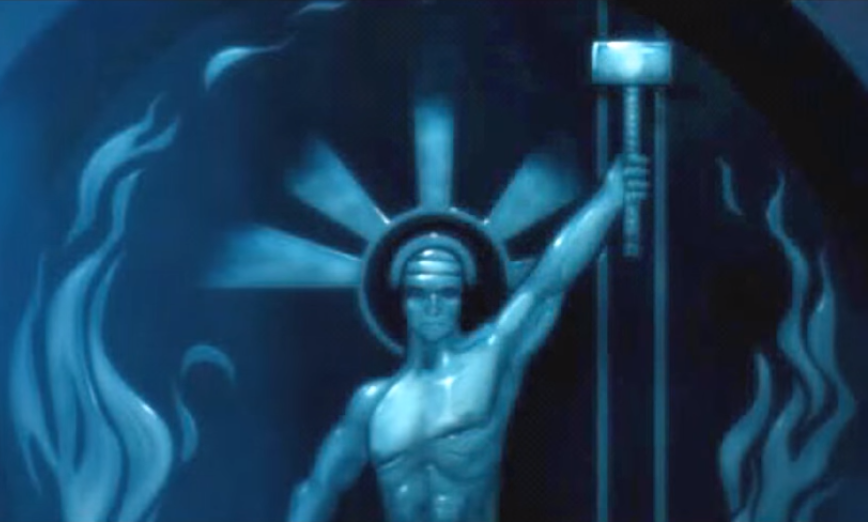
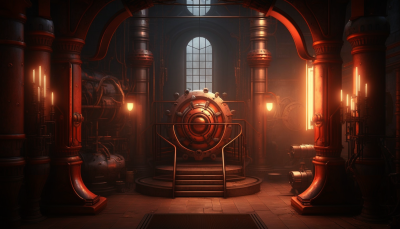
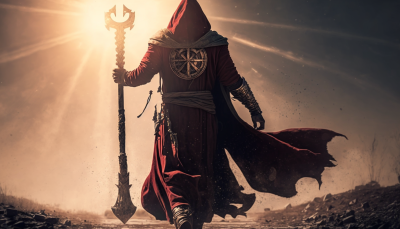
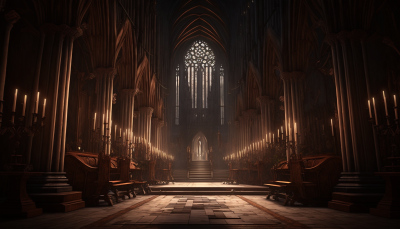
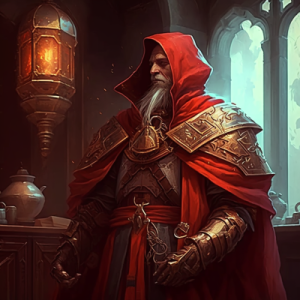
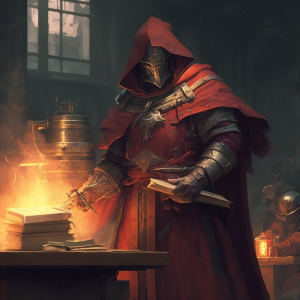
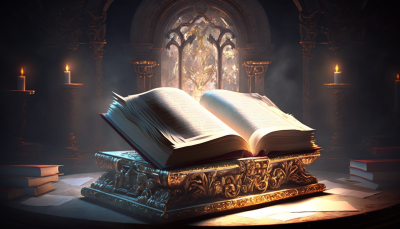
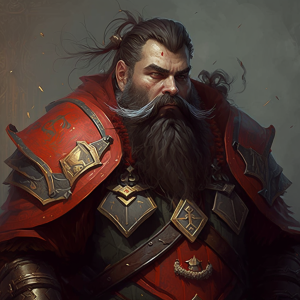

Comments